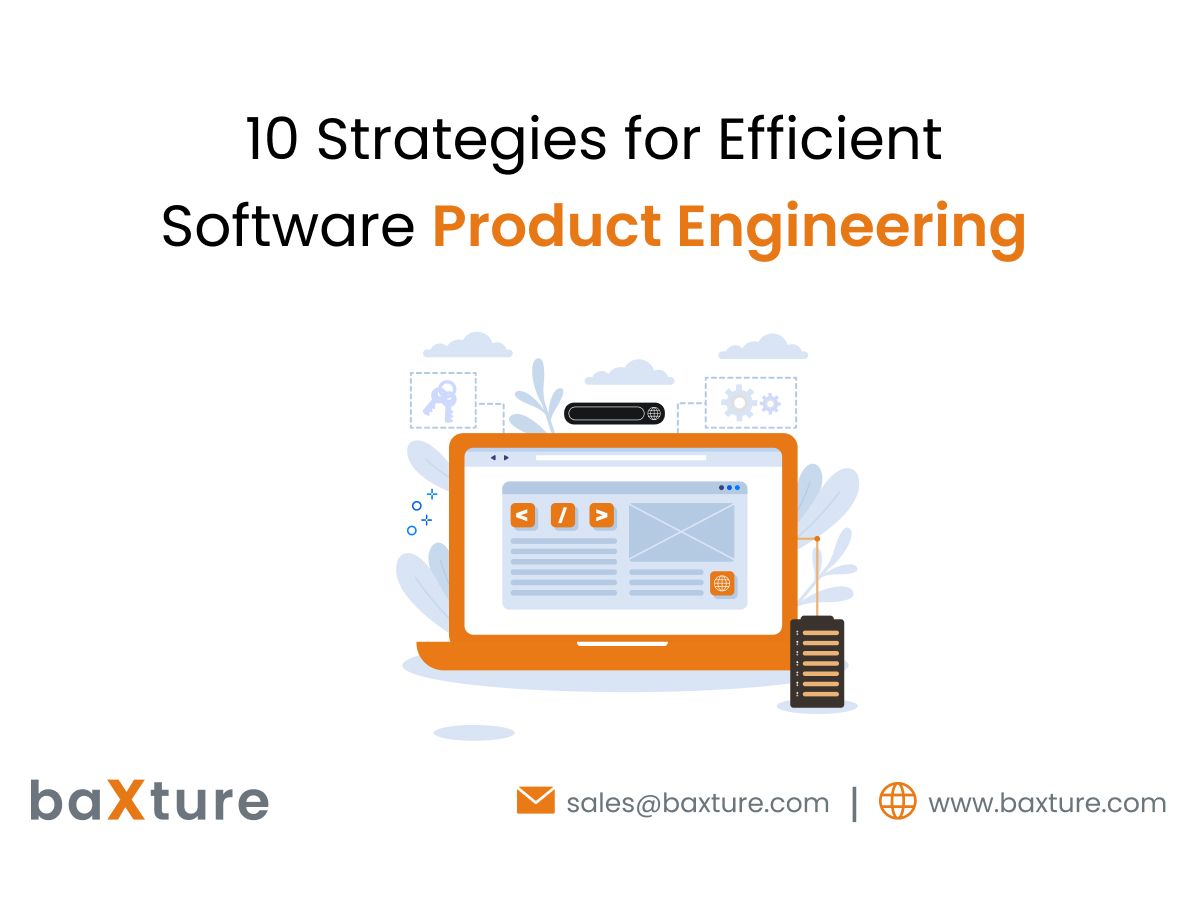Blogs
10 Strategies for Efficient Software Product Engineering

In today's fast-paced and competitive business landscape, time-to-market plays a critical role in the success of software products. Decision makers and initiators within companies understand the importance of efficient software product engineering to gain a competitive edge. This article presents 10 strategies that can significantly accelerate time-to-market, helping companies deliver high-quality software products faster and more effectively.
Strategy 1: Agile Development Methodology
Agile development methodology has revolutionized the software industry by enabling iterative and flexible development processes. Decision makers recognize that adopting agile methodologies can expedite the delivery of software products while ensuring adaptability to changing requirements. This strategy emphasizes the importance of frequent communication, collaboration, and iterative development cycles, enabling rapid iterations, feedback incorporation, and quicker time-to-market.
Strategy 2: Minimum Viable Product (MVP) Approach
The MVP approach has gained immense popularity among decision makers seeking to accelerate time-to-market. By focusing on developing a minimal yet functional version of the product, decision makers can quickly gather user feedback and validate assumptions. This strategy emphasizes the importance of prioritizing features, reducing development time, and rapidly launching an initial version to gain valuable insights and iterate based on user feedback.
Strategy 3: Continuous Integration and Continuous Deployment (CI/CD)
CI/CD practices allow decision makers to automate the build, testing, and deployment processes, resulting in shorter release cycles and faster time-to-market. By continuously integrating code changes and automatically deploying them to production environments, decision makers can ensure a smooth and efficient software delivery pipeline. This strategy highlights the benefits of CI/CD adoption and provides insights into popular tools and best practices.
Strategy 4: DevOps Culture and Collaboration
Decision makers recognize that fostering a DevOps culture within their organizations is crucial for streamlined software product engineering. By encouraging collaboration between development and operations teams, decision makers can eliminate silos, improve communication, and drive efficiency throughout the software development lifecycle. This strategy explores the principles of DevOps and provides actionable steps for promoting collaboration and cultural transformation.
Strategy 5: Lean Product Development
Lean product development principles can significantly accelerate time-to-market by eliminating waste and optimizing processes. Decision makers understand the importance of identifying and reducing non-value-added activities, streamlining workflows, and maintaining a focus on delivering value to customers. This strategy delves into lean concepts and provides real-world examples of organizations that have successfully implemented lean product development strategies.
Also read - How to Choose the Right Product Engineering Partner for Your Startup
Strategy 6: Robust Project Management
Effective project management is pivotal in ensuring timely software product delivery. Decision makers understand the significance of efficient resource allocation, task prioritization, and milestone tracking. This strategy highlights key project management techniques, such as Agile project management frameworks, risk management strategies, and effective communication, to facilitate efficient software product engineering and faster time-to-market.
Strategy 7: Automation and Tooling
Automation is a game-changer for decision makers aiming to expedite software development processes. By leveraging automation tools and frameworks, decision makers can reduce manual effort, increase productivity, and eliminate potential bottlenecks. This strategy explores various areas of software development that can be automated, such as code generation, testing, and deployment, while providing insights into popular automation tools and their benefits.
Strategy 8: User-Centric Design and Feedback Loop
Decision makers understand the significance of user-centric design in accelerating time-to-market. By continuously gathering user feedback and incorporating it into the development process, decision makers can ensure that the software product meets user expectations and addresses their pain points. This strategy emphasizes the importance of user research, prototyping, and iterative design cycles to create a seamless feedback loop that drives product improvements.
Strategy 9: Scalable Infrastructure and Cloud Computing
Decision makers acknowledge the advantages of leveraging scalable infrastructure and cloud computing technologies to accelerate time-to-market. By utilizing cloud platforms, decision makers can quickly provision resources, scale infrastructure as needed, and optimize costs. This strategy provides insights into designing scalable architectures, choosing the right cloud service provider, and effectively utilizing cloud resources to enhance software product engineering efficiency.
Strategy 10: Effective Quality Assurance and Testing
Robust quality assurance and testing processes are essential for decision makers aiming to release high-quality software products within shorter timeframes. This strategy emphasizes the importance of comprehensive test planning, test automation, and continuous monitoring to identify and rectify issues early in the development cycle. Decision makers are encouraged to implement effective quality assurance practices that align with agile methodologies and ensure faster time-to-market.
Conclusion
For decision makers and initiators within companies seeking efficient software product engineering, implementing these 10 strategies can prove instrumental in accelerating time-to-market. By embracing agile methodologies, MVP approaches, CI/CD practices, and DevOps culture, decision makers can optimize software development processes, enhance collaboration, and drive faster delivery of high-quality software products. Combining these strategies with lean principles, robust project management, automation, user-centric design, scalable infrastructure, and effective quality assurance, decision makers can gain a competitive edge by significantly reducing time-to-market and delighting customers with timely software releases.